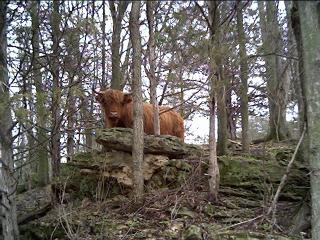
Extended Pedigree Utilities
I have created a spreadsheet that can be used to record extended pedigrees.
Simply enter the basic calf data (DOB, Sex, color, name, registration number)
this file into your spreadsheet program (Excel or OpenOffice), copy it, and
paste it into the appropriate sire/dam page of the pedigree spreadsheet you are
using.
There is also a set of utilities will help you to create an
extended pedigree by retrieving the data necessary from the AHCA website. In order to
use these utilities, you will need to obtain the Python interpreter from python.org
if you do not already have it.
Python 2.x
I am currently using Python 2.7.10.
Windows users can download Python 2.5.4 at
It is recommended that Excel users also install the pywin32 extensions available at:
You will also need a spreadsheet program, like Microsoft Excel, or LibreOffice.
LibreOffice is available via download at:
Python 3.x
If you do not already have it. This is free for download. I currently am using version 3.9.7. The Windows installer version can be downloaded from:
It is recommended that Excel users also install the pywin32 extensions available at:
You will also need a spreadsheet program, like Microsoft Excel, or LibreOffice.
Libre Office is available via download at:
In order to install the pedigree generation scripts, simply unzip the file Distribution.zip
into a temporary folder.
Both the Python 2.x and Python 3.x folders are included in the distribution. You can
choose the version that you wish to use and copy that folder to a location where you
wish to create the pedigree files.
In order to generate a pedigree, you must first retrieve the data with the
script, getanimal.py. First, make sure that your computer is connected to
the internet, the run the script getanimal.py
Enter the Name or registration number for the animal at the prompt. This
will generate a comma separated file, master_db.csv. If the file
already exists, the data for the new animal will be added to the file.
Once you have this file, run the script, gen_pedigree.py and enter
the name or registration number at the prompt. This will generate a new comma separated
file, Animal_Name.csv. You can import this file into your spreadsheet
program (Excel or OpenOffice), copy it, and paste it into the appropriate sire/dam page
of the pedigree spreadsheet you are using.
Excel users can use the script genExcelPedigree.py. This will automatically
create a pedigree and open Excel to display it.
The .csv file that is created or updated can be used as a master database.
When you want to generate the pedigree for an animal that is in the database file,
you can simply run gen_pedigree.py or genExcelPedigree.py for
the animal without first having to download the information with getanimal.py.
Excel users can use the script genExcelPedigree.py. This will automatically
create a pedigree and open Excel to display it.
The .csv file that is created or updated can be used as a master database.
When you want to generate the pedigree for an animal that is in the database file,
you can simply run gen_pedigree.py or genExcelPedigree.py for the animal without
first having to download the information with getanimal.py.
An additional utility is diversity.py. Once you have built up your local database .csv
file, you might want to see how many times the same ancestors appear in an animal's
pedigree. Enter the name or registration number of an animal at the prompt and this
script will show the ancestors out to the seventh generation with a count of how many
times they appear and which generations they appear in. The information will be saved
in a file,